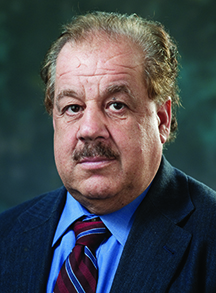We talk with leading educators in the field of asphalt technology in an effort to tune in to academia on important industry issues.
Shad M. Sargand is Russ Professor of Civil Engineering in the Russ College of Engineering and Technology and Associate Director of the Ohio Research Institute for Transportation and the Environment, both at Ohio University.
What drew you to civil engineering, and in particular, transportation?
When I was growing up in Afghanistan, I was interested in physics and mathematics. Civil engineering was a way of following those interests while fulfilling vital social needs. Also, in civil engineering you are continuously engaged with the environment in a tangible way. I continued my graduate studies at Virginia Tech, earning a PhD in CE specializing in geotechnical engineering and mechanics, and saw there were great opportunities to use this knowledge in the pavement area.
What can we learn about asphalt pavements at an Accelerated Pavement Load Facility (APLF)?
Laboratories are excellent for studying a single material in isolation. The APLF is designed to accommodate a full-depth complete pavement system built up from subgrade and base to surface layers, which allows us to study a complete asphalt pavement system, including how the components interact. Instrumentation is used to monitor the system’s response to heavy applied loads. Environmental controls allow for adjusting for conditions such as high moisture and extreme hot and cold temperatures. Before an agency builds a new kind of pavement, a prototype can be built in the APLF and data collected to provide confidence the design will work in the field. The data are also used to validate mathematical models of pavement systems.
What questions are still unanswered about warm mix asphalt (WMA) performance in the field?
WMA has been shown to be economical and environmentally friendly. There are several different additives on the market. Procedures involving WMA need to be standardized and apply a uniform approach. The biggest question is long-term performance. There is a need for extended follow-up on well documented installations to assess the long-term performance of warm mix asphalt.
What testing methods are best used on asphalt perpetual pavements?
The key determinant of perpetual pavement design is the endurance limit. Extensive research has been conducted and continues on the effect of different mixes and environmental conditions. In Ohio there are some pavements that have lasted over 30 years without showing significant structural distresses. The state has been investigating the perpetual pavement concept for the past 15 years because they want to reduce the need for costly reconstruction work.
Where should today’s engineering students focus their research in the asphalt field?
In designing an asphalt pavement, in-depth knowledge of the material properties of each component is the key to success. One must keep up with new developments, including new materials and improved techniques using traditional materials. There is a need to learn how these materials perform in the context of a complex pavement system and how they are influenced by load and environmental conditions. To be successful as a pavement engineer, it is important to have a strong foundation in engineering mechanics.
